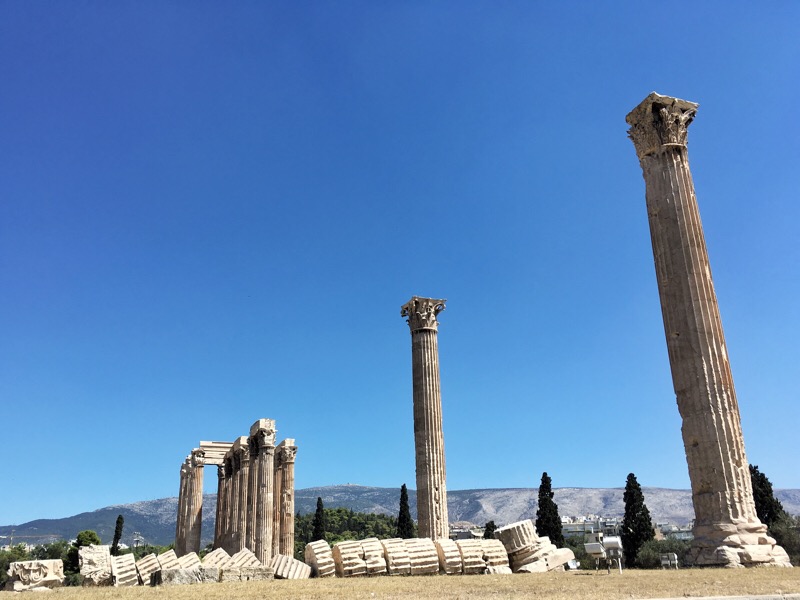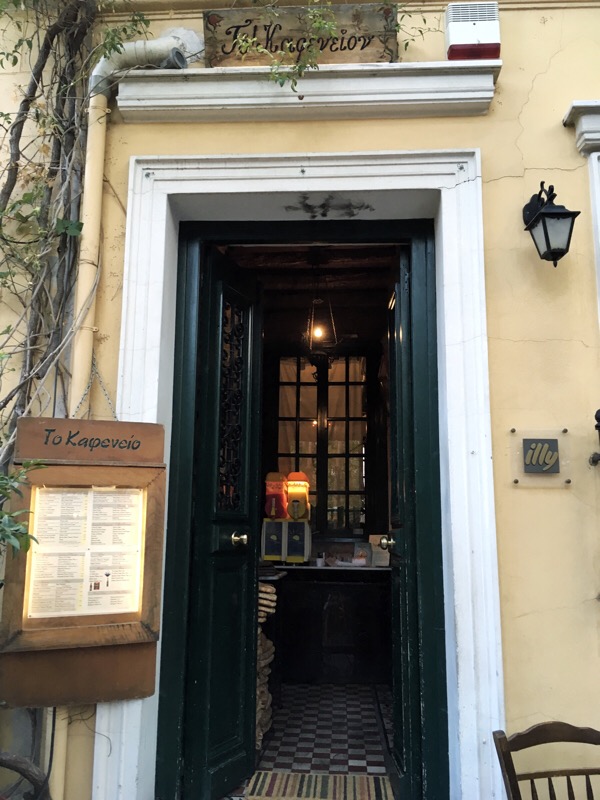Athens, day 1
To fuel my upcoming adventure, I tried some goat’s milk yogurt that I picked up from a grocery store the night before and Greek coffee (€1) prepared in sand, suspiciously similar to Turkish coffee, made by hand at Mokka. The yogurt


Ambitiously, I decided to get the multi-site ticket (€30) that covers seven famous ruins of Athens: the Acropolis (€20 by itself), Ancient Agora (€8 by itself), Kerameikos Cemetery (€8 by itself), Aristotle’s Lyceum (€4 by itself), the Temple of Zeus (€6 by itself), Hadrian’s Library (€4 by itself), and the Roman Agora (€8 by itself).
Pro tip: be sure to add the Google Map from GreekLandscapes.com and follow the orange route for all the sights except Aristotle’s Lyceum and the Temple of Zeus, the former of which you can find directly to the west of the Byzantine and Christian Museum, and the latter of which is on the green route. The routes show where the entrances to all these places are, whereas relying solely on Google Maps might have you wandering in circles around every landmark trying to find an opening.
Although I was skeptical at first, these sights managed to capture my interest, mostly because of how old they are and, as a result, how they have been repurposed, much like Hagia Sophia was. (I’ll cover the Acropolis, Ancient Agora, and Kerameikos Cemetery in separate posts.)

After visiting the Acropolis, I climbed the slippery marble steps to Areopagus, which is where the Athens council of elders gathered before 5th century BC. It has a great view of both Athens and the Acropolis, which is right next to it.


Spontaneously, I opted to take the metro to the east side of town to see Aristotle’s Lyceum and the Temple of Zeus after checking out the Ancient Agora and Kerameikos Cemetery. Again, not much is left of the great walking school today, but walking around it gives you a little hint of what it must’ve been like to be one of his students. They’ve planted some olive trees and pomegranate trees, among others, around the perimeter of what used to be the gymnasium and baths.


On the way to the Temple of Zeus, I cut through the [National Garden][national-garden]. You know when a city has too many archaeological artifacts when they use columns for park benches.

Ruins of a Roman bath were just sitting around between the [National Garden][national-garden] and the Temple of Zeus.

Hadrian’s Arch sits outside the grounds of the Temple of Zeus.

The Temple of Zeus was my absolute favorite of the seven ruins included on the multi-site pass. The grounds are wide, which makes it comfortable to admire the temple.


The ruins around the temple are fairly well-labeled, including an old Roman bath where you can still see old seats and tile.


Ruins-visiting is hard work, especially in the hot Athens summer. After five sights, I needed to have some ice cream. I returned to the Monastiraki neighborhood on foot to check out Yiasemi, an adorable cafe sitting on an alley with a staircase. Everything seems like it’s been made from scratch. Even a prep cook was cutting up and mixing ingredients for an eggplant salad when I walked in.


I looked at both the menu and the cake selection, and I went with their signature orange pie (€5) with a scoop of mastiha (mastic) ice cream (+€1). The pie is more like a cake as there was no crust: I think Greeks use the word “pie” liberally. And it was amazingly moist because (as the waiter told me later) they use Greek yogurt in the batter. The mastic ice cream was straightforward yet textured beautifully. Mmm, what a perfect afternoon pick-me-up!


Then it was time to find a bookstore to hide from the afternoon heat. I found a relatively big one called Politeia. It seemed small at first, but that was because I didn’t realize there were four different entrances, three of which led to different parts of the store, all of which had basements and two of which had an upper floor! I hung out in the children’s area and found an English book that covered many Greek myths. Having found a lone stool to perch on, I lost track of time while reviewing them and read half the book before I looked up.

It was about time to find a spot to have dinner, but little did I know that I would waste an hour and a half going to places that would be closed until 22 August for summer holiday. But I did find a garage door that had fun graffiti to look at.

I gave up on finding a restaurant in a non-touristy area after the third try and went to Plaka, probably the heart of Athens’s tourist storm. Kafeneio did not let me down with closed doors.



Since I was in Greece, I would’ve been a huge miss on my part if I didn’t order the dolmades (€4.50), and the menu claimed that their meatballs in sauce (€7.90) was a secret family recipe. Both were solid but not earth-shattering.


On the way home, Aristotle was staring at me from a wall. This piece of public art is actually an ad for an educational program called Greek Studies on Site. It looks really interesting, especially for students interested in Greek culture and literature!
